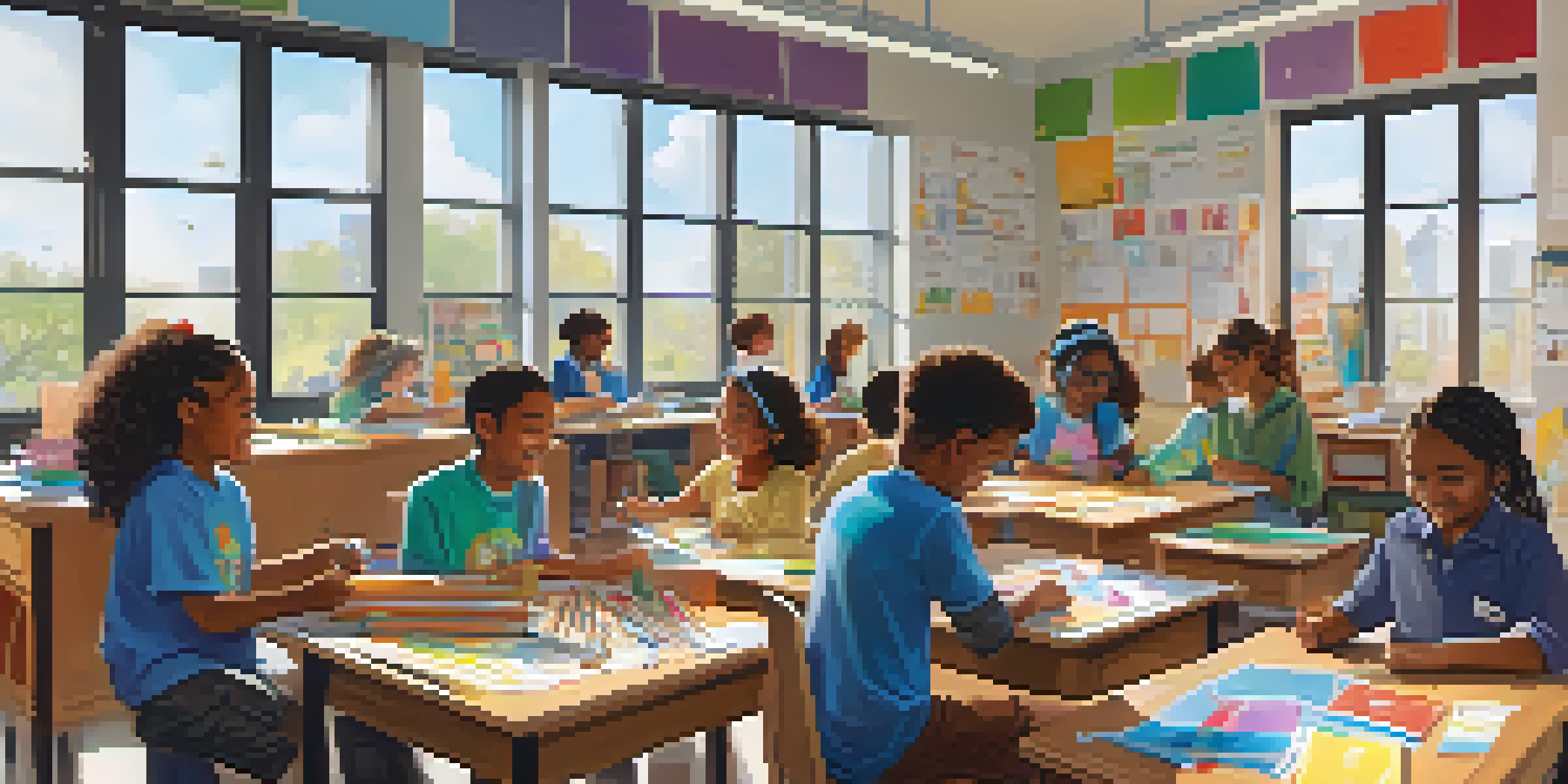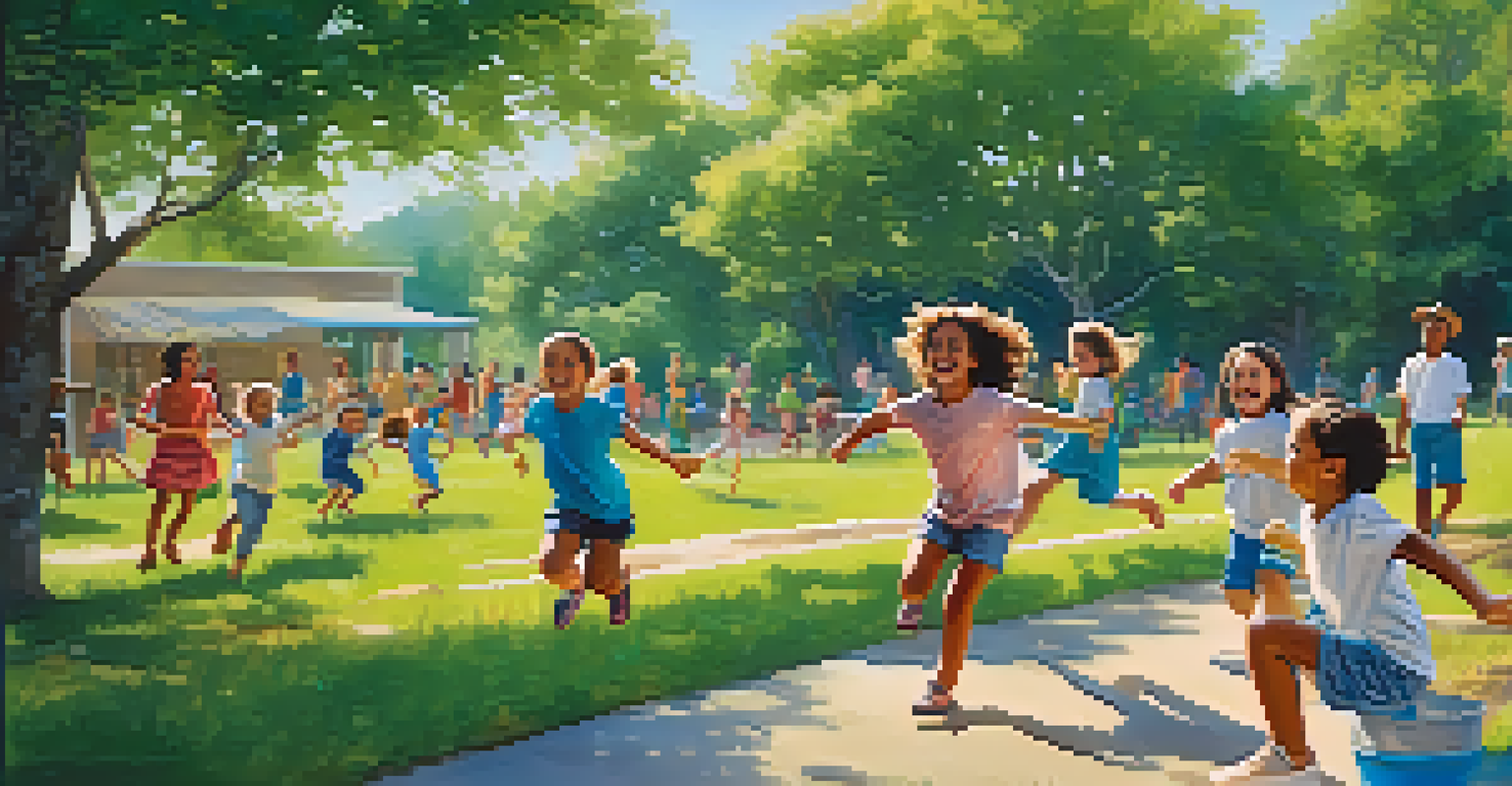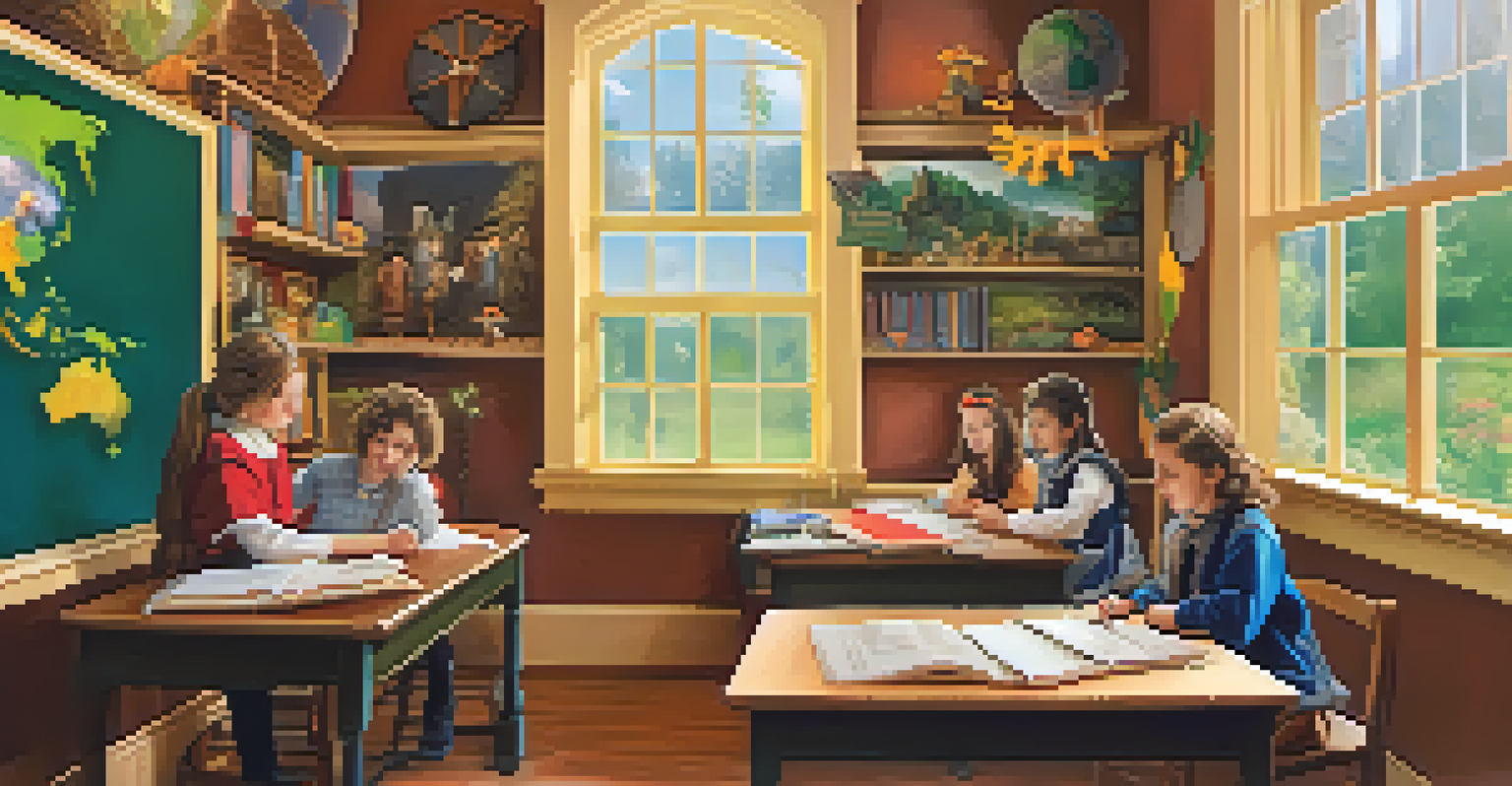The Importance of Play in Student-Centered Learning

Understanding Student-Centered Learning and Its Goals
Student-centered learning shifts the focus from the teacher to the student, promoting active participation. This approach encourages learners to take charge of their education, fostering independence and critical thinking. By personalizing the learning experience, students are more likely to engage deeply with the material.
Play is the highest form of research.
In this dynamic environment, students are not just passive recipients of information but active participants in their learning journey. They collaborate, explore, and express themselves, leading to a more meaningful educational experience. Ultimately, the goal is to prepare learners for real-world challenges, making them adaptable and resilient.
One key element of student-centered learning is the incorporation of various teaching methods, including play. By integrating play into the curriculum, educators can create a more holistic learning experience that resonates with students on multiple levels.
The Role of Play in Enhancing Engagement
Play is often seen as a frivolous activity, but it serves a crucial role in maintaining student engagement. When students participate in playful activities, they are more likely to be actively involved and invested in the learning process. This heightened engagement can lead to increased motivation and a desire to learn.

Consider a classroom where students learn about ecosystems through a interactive game. Instead of passively listening to a lecture, they are immersed in the subject matter, making discoveries and applying concepts in real-time. This hands-on approach not only makes learning fun but also reinforces key ideas.
Play Enhances Student Engagement
Incorporating playful activities in learning keeps students actively involved and boosts their motivation to learn.
Research shows that when students are engaged, they are more likely to retain information and develop a love for learning. Play transforms traditional learning environments into vibrant spaces where students thrive.
Play as a Catalyst for Creativity and Innovation
Creativity is essential in today's rapidly changing world, and play can be a powerful catalyst for fostering it. When students engage in playful activities, they are encouraged to think outside the box and explore new ideas without the fear of failure. This freedom to experiment can lead to innovative solutions and fresh perspectives.
The more that you read, the more things you will know. The more that you learn, the more places you'll go.
For instance, a project-based learning activity might allow students to create a model of a sustainable city. Through play, they can brainstorm and test different ideas, pushing the boundaries of their creativity. This hands-on experience not only enriches their understanding but also instills a sense of ownership over their learning.
Incorporating play into the learning process nurtures a culture of creativity, where students feel empowered to express themselves and take risks. This culture will serve them well in their future endeavors, both academically and professionally.
Building Social Skills Through Playful Learning
Play is not just about individual learning; it's also a social activity that helps students build essential interpersonal skills. Through collaborative play, students learn to communicate, negotiate, and resolve conflicts—skills vital for success in the classroom and beyond. These interactions foster a sense of community and belonging.
Imagine a group of students working together on a science experiment. They must share ideas, listen to each other, and make compromises to achieve their goal. This experience not only enhances their understanding of scientific concepts but also builds valuable teamwork skills.
Creativity Thrives Through Play
Playful learning encourages students to think creatively and explore new ideas without the fear of failure.
As students engage in playful learning, they develop empathy and emotional intelligence. These social skills are crucial for navigating the complexities of group dynamics and forming positive relationships throughout their lives.
The Connection Between Play and Emotional Well-Being
Emotional well-being is a cornerstone of effective learning, and play can significantly contribute to it. Engaging in playful activities provides students with an outlet for self-expression and stress relief. This balance is essential for maintaining a positive classroom atmosphere where students feel safe and supported.
For example, incorporating movement-based games or creative arts into the curriculum allows students to release pent-up energy and emotions. This not only enhances their mood but also prepares them to focus better on academic tasks. When students feel good emotionally, they are more open to learning.
Furthermore, play encourages resilience. As students encounter challenges in a playful context, they learn to navigate setbacks, fostering a growth mindset that will benefit them in all areas of life.
Integrating Play into Diverse Learning Styles
Every student learns differently, and play can be a versatile tool for addressing diverse learning styles. Whether a student is a visual learner who thrives on hands-on activities or an auditory learner who benefits from storytelling, play can cater to these individual needs. This adaptability ensures that all students can engage meaningfully with the material.
For instance, incorporating role-playing scenarios in a history lesson allows students to embody different historical figures, making the content more relatable and memorable. This method appeals to kinesthetic learners while also providing an auditory experience through discussion.
Play Builds Essential Social Skills
Collaborative play helps students develop vital interpersonal skills like communication, negotiation, and empathy.
By recognizing and integrating various learning styles through play, educators can create an inclusive environment where every student has the opportunity to shine and succeed.
Challenges and Solutions in Implementing Play-Based Learning
Despite the clear benefits of play in student-centered learning, there are challenges in its implementation. Some educators may feel constrained by standardized testing and curriculum requirements, leading to a reluctance to incorporate playful methods. Additionally, there can be misconceptions about the seriousness of play in learning.
To overcome these challenges, it's essential to advocate for a balanced curriculum that values both academic rigor and the power of play. Educators can start small by integrating short, playful activities within existing lessons, gradually expanding their use as confidence grows.

Collaboration among teachers can also be beneficial. By sharing resources, ideas, and successful strategies, educators can create a supportive network that prioritizes play as an integral part of learning.
Conclusion: Embracing Play for Holistic Learning Experiences
In conclusion, play is not just an enjoyable pastime; it is a vital component of student-centered learning. By embracing play, educators can create engaging, creative, and inclusive learning environments that cater to the diverse needs of their students. The benefits extend beyond the classroom, helping to shape well-rounded individuals equipped for future challenges.
As we continue to explore innovative teaching methods, it’s crucial to recognize the role of play in fostering engagement, creativity, and social skills. By prioritizing play, we pave the way for a more enriching educational experience that resonates with learners of all ages.
Ultimately, embracing play in education is about nurturing a love for learning that lasts a lifetime. Let’s champion playful learning as a pathway to success in the ever-evolving landscape of education.